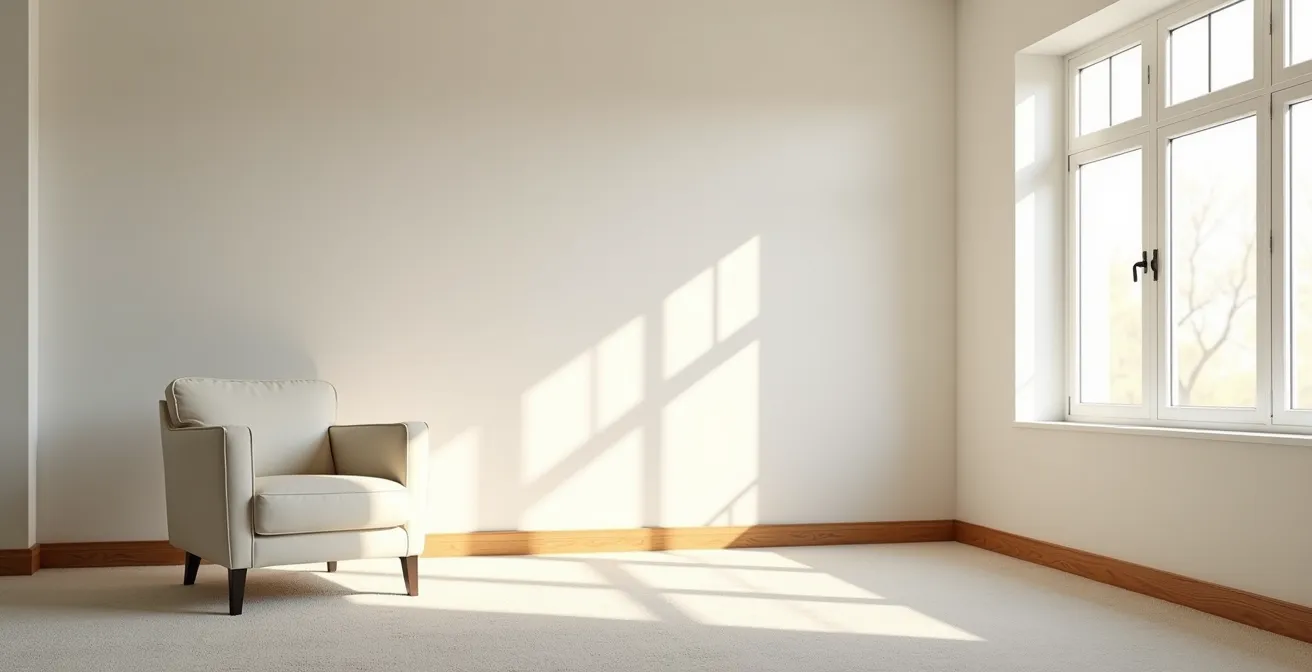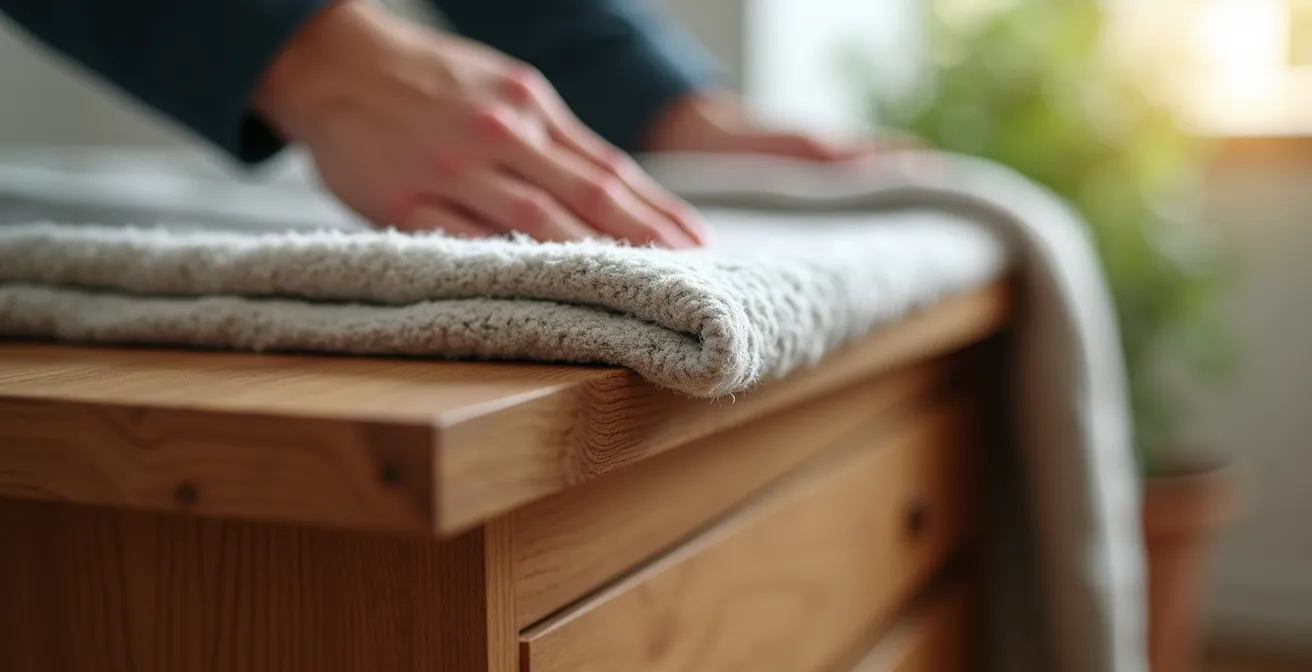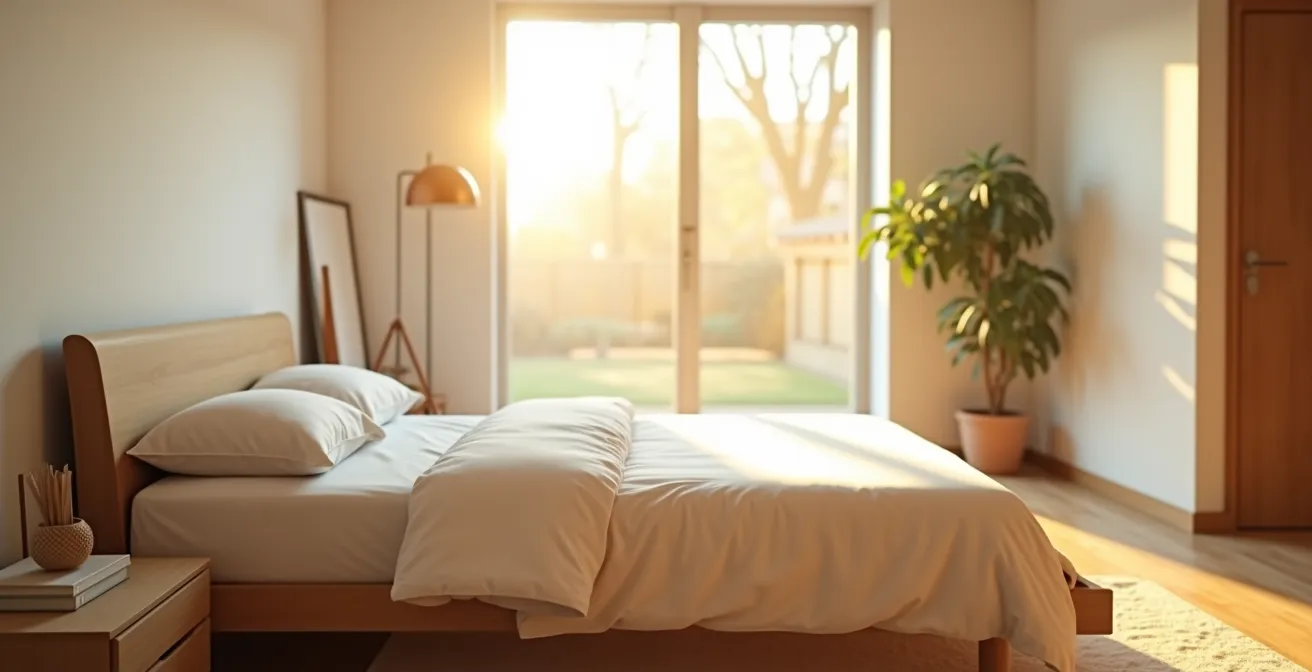
Moving into a new home is a monumental task, a whirlwind of boxes, logistics, and endless decisions. Amidst the chaos, the final deep clean is often treated as an afterthought or a line item that can be cut. But this perspective overlooks a critical truth: a professional move-in cleaning is not a luxury expense. It is a foundational investment in the health of your family, the long-term value of your property, and your own mental well-being during a uniquely stressful time.
The difference between a surface wipe-down and the deep sanitization offered by a professional move-in cleaning like sunrise-cleaning.com, is the difference between a house that looks clean and a home that feels truly new. It’s about eradicating the invisible history of previous occupants and ensuring your fresh start is built on a genuinely healthy foundation, from the air you breathe to the surfaces you touch.
Your Move-In Clean: The Investment Framework
- Health Security: Neutralize hidden allergens, bacteria, and construction residues that standard cleaning misses.
- Asset Protection: Prevent immediate damage to your belongings and establish a “baseline of clean” for easier future maintenance.
- Value Calculation: Understand the true cost of DIY vs. professional services by factoring in time, supplies, and stress.
- Mental Clarity: Outsource a major physical task to reclaim mental energy for the more important work of settling in.
Secure a Healthy Foundation: The Sanitization Beyond Surface Cleaning
A vacant home may look clean, but it often harbors invisible threats left behind by previous occupants or the construction process. A professional service goes beyond aesthetics to perform a crucial sanitization, neutralizing bacteria, allergens, pet dander, and stubborn residues like nicotine that a simple cleaning can’t eliminate. This creates a certifiably healthy environment for your family from day one.
New builds present their own specific risks. Professionals are equipped to safely manage the fine construction dust that settles everywhere and can help mitigate Volatile Organic Compounds (VOCs). These chemicals off-gas from fresh paint, new flooring, and cabinetry, and require specialized cleaning and ventilation protocols to reduce exposure, particularly in the first few weeks of occupancy.
What are Volatile Organic Compounds (VOCs)?
VOCs are gases emitted from certain solids or liquids, including many common building materials like paints, adhesives, and sealants. High concentrations, especially in a newly finished home, can cause short-term and long-term adverse health effects.
The table below outlines the typical progression of VOC concentrations in a new build, highlighting the critical window right before you move in.
| Construction Phase | VOC Concentration Profile | Health Consideration |
|---|---|---|
| Before Enclosure | Reflects outdoor air + initial framing off-gassing | Low to moderate |
| Interior Finishing | Elevated from adhesives, paints, flooring | Decreases rapidly after application |
| Substantial Completion | Peak levels from punch-out work (paint, sealants) | Highest exposure window |
| Move-In Readiness | Declining off-gassing + occupant-generated VOCs | Professional ventilation and cleaning recommended |
Furthermore, a professional’s trained eye serves as a final, informal inspection. They are accustomed to looking in the hidden corners—under sinks, in closets, behind appliances—where they can spot the early signs of potential issues like mold, pest activity, or slow water leaks. This simple walkthrough can save you from discovering a much larger problem down the road. Ensure a safe new home by addressing these concerns before they escalate.
A professional cleaning team focuses on areas that accumulate the most germs and allergens, ensuring a comprehensive sanitization that you can feel.
Professional Sanitization Focus Areas
- High-touch surfaces: door handles, light switches, countertops, cabinet fronts (bacteria like E. coli and Salmonella concentrate here)
- Hidden dust reservoirs: baseboards, vents, air returns, ceiling fans (accumulate allergens and construction debris)
- Fabric and soft surfaces: carpets, upholstery, curtain rods (harbor dust mites, pet dander, and microscopic residues)
- Kitchen appliances: interior of refrigerator, oven, dishwasher (contain food residues and previous occupant bacteria)
- Bathroom fixtures: shower grout, toilet bases, ventilation ducts (ideal environments for mold and mildew growth)
Protect Your Biggest Asset Before Unpacking a Single Box
Moving furniture and belongings into a home that hasn’t been deep-cleaned is a recipe for immediate wear and tear. Dust, dirt, and grime on floors and surfaces get transferred onto your furniture, rugs, and boxes, potentially causing scratches or permanent stains. A professional cleaning ensures your possessions enter a pristine environment, preserving their condition from the very start.
The financial impact of damage during a move is surprisingly high. Annually, Americans spend approximately $23.5 billion to fix or replace furniture damaged during moves, underscoring the importance of every protective measure. Starting with a clean slate is one of the easiest and most effective.
Protecting your furniture requires attention to detail, especially on vulnerable corners and surfaces where dust can cause abrasive damage during transit.

As moving experts explain, even microscopic debris can have a significant impact when an item is being moved, making a pre-move deep clean an essential part of furniture protection.
Dust, grit, and other tiny bits of debris left on a surface can act like sandpaper when trapped under a moving blanket during transit, causing fine scratches and wear.
– Professional Moving Experts, How to Protect Furniture When Moving: Expert Tips
Ultimately, a professional move-in clean establishes a “baseline of clean” for your property. This makes all future cleaning and maintenance significantly easier and more effective. You’re not just cleaning for today; you’re setting a new, higher standard for your home’s upkeep. Think of the cleaning fee not as an expense, but as a micro-investment—a small insurance policy to protect the condition and value of your primary, six-figure investment: your new home.
Professional involvement significantly reduces the risk of property damage, as shown in the comparison below.
| Moving Approach | Reported Damage Rate | Time to Complete Standard 3-Bedroom Home | Expert Handling Protocol |
|---|---|---|---|
| DIY Move | 5-10% | 3-5 days | Varies by individual experience |
| Professional Move | 1-2% | 1-2 days | Systematic multi-layer protection, trained teams |
| Professional + Deep Clean | <1% | 1-2 days | Comprehensive sanitization + structural protection |
Calculate the True Value: A Practical Framework for Your Decision
When comparing costs, it’s easy to fall into the trap of looking only at the quoted price. The true “DIY Cost” must include hidden factors: the monetary value of your time, the cost of specialized supplies, the physical strain, and the undeniable “stress tax” of adding a huge task to your moving plate. An industry analysis for a 2,000 sq ft home shows that 15-20 hours of DIY labor, valued at just $25/hour, equals $375-$500 in personal time—often matching or exceeding the professional fee.
Professional service costs are flexible and can be tailored to your needs. For instance, move-in cleaning can range from $40 to $400 depending on home size and the level of service required. This variability allows you to find an option that fits your budget. When you start the process of choosing reliable home service providers, be sure to request detailed quotes that outline exactly what is included.
Use this self-assessment framework to determine whether a professional clean is a ‘must-have’ or a ‘nice-to-have’ for your specific situation.
| Factor | ‘Must-Have’ Cleaning Profile | ‘Nice-to-Have’ Cleaning Profile |
|---|---|---|
| Household Composition | Young children (under 5), elderly members, or immunocompromised residents | Healthy adults, no young children |
| Allergy/Health Status | Multiple family members with allergies, asthma, or respiratory sensitivities | No known severe allergies |
| Moving Timeline | Less than 2 weeks between moves, or coordinated with work deadlines | 3+ weeks available for staging and cleaning |
| Prior Home Condition | Foreclosure property, rental with unknown history, known smoker occupancy, visible mold/pest signs | Well-maintained prior ownership, short vacancy period |
| Service Tier Recommended | Deep Sanitization Clean + Air Quality Testing | Standard Move-In Clean |
Understanding the different service tiers is key to finding a good fit. A “standard move-in clean” covers basics, while a “deep clean” tackles grout, appliances, and fixtures. A “sanitization” service uses specific products to kill germs. Many companies also offer add-on services that allow you to customize the job to your priorities and budget.
Additional Services and Cost Implications
- Carpet cleaning (average $75-$200): Removes embedded allergens, dust mites, previous occupant residues from high-traffic zones
- Window washing ($4-$10 per window): Improves natural light quality, removes construction dust film, enhances immediate perception of cleanliness
- Refrigerator deep cleaning ($10-$40): Eliminates bacteria, odors, and unknown residues inside appliances before food storage
- Baseboard and trim cleaning ($25-$75 per area): Removes accumulated dust, allergens, and construction debris often missed in standard cleaning
- Air duct and HVAC sanitization (varies): Reduces VOC circulation and removes construction particulates from ventilation system
Key Takeaways
- A professional move-in clean is an investment in health, eliminating hidden allergens, bacteria, and VOCs.
- It protects your assets by preventing grime transfer and sets a “baseline of clean” for easier maintenance.
- The true DIY cost includes your time, stress, and supplies, often equaling the price of a professional service.
- Outsourcing cleaning combats decision fatigue, freeing up mental energy for the positive process of nesting.
Reclaim Your Mental Bandwidth for a Truly ‘Finished’ Move
Moving is a marathon of choices that can quickly lead to ‘decision fatigue.’ Psychological studies show that the average person makes over 35,000 decisions daily, a number that skyrockets during a move. Outsourcing the major, physically demanding task of deep cleaning frees up critical mental energy for what truly matters: organizing your new life, setting up utilities, and helping your family adjust.
The psychological impact of walking into a ‘walk-in ready’ home cannot be overstated. The service you are paying for isn’t just a clean space; it’s the profound feeling of a genuine fresh start, unburdened by the lingering chore of scrubbing away someone else’s dirt. It provides an immediate sense of peace and control in a new environment.
An organized, serene space is the ultimate goal of any move, allowing you to feel at home from the moment you walk in.

This feeling of relief is a recognized psychological benefit. A clean environment directly counters the feeling of being overwhelmed that so often accompanies a major life change.
For some people it feels like a reflection of ‘My life feels messy, my life has an endless to-do list and my life feels disorganized.’ Having an environment that is clean and organized gives a lot of people relief.
– Dr. Saltz, Clinical Psychologist, How Hiring a House Cleaner Saved My Mental Health
Ultimately, hiring a professional cleaner allows you to shift your focus from ‘cleaning’ to ‘nesting’. Instead of spending your first days on your hands and knees with a scrub brush, you can immediately begin the positive, joyful process of unpacking, decorating, and making your new house feel like a home. That is a value that can’t be measured on a quote.
Frequently Asked Questions on Professional Home Cleaning
What is the ‘fresh start effect’ and how does it apply to moving into a professionally cleaned home?
Psychologists refer to the fresh start effect: temporal landmarks (like a new address) naturally motivate people to start new goals and habits. Moving into a professionally cleaned, sanitized space amplifies this effect by removing psychological barriers to feeling ‘settled’ and reducing the mental load of inherited grime or cleanliness concerns.
How does decision fatigue manifest during the moving process?
Decision fatigue occurs when the brain becomes depleted from making repeated choices. During a move, individuals face hundreds of decisions: what to pack, what to donate, how to arrange boxes, which services to hire. After decision fatigue sets in, people tend to make poorer choices, procrastinate, or avoid decisions altogether. Outsourcing the cleaning decision entirely removes one major source of decision strain.
What are the mental health benefits of a ‘walk-in ready’ home versus one requiring cleaning?
Research shows that walking into a clean, organized space reduces stress hormone (cortisol) levels and promotes feelings of control and safety. Conversely, entering a home requiring cleaning triggers immediate cognitive burden: the brain catalogs tasks, estimates time required, and creates new to-do list anxiety before occupants have even unpacked. A professionally cleaned home eliminates this ‘task burden’ on arrival.
How does nesting behavior differ when a home is pre-cleaned versus when occupants must clean first?
Nesting—the psychological process of personalizing a space—is significantly accelerated in a clean environment. When the foundational cleanliness is already established, occupants can immediately focus on positive activities: unpacking meaningful belongings, arranging furniture, decorating, and establishing routines. Without this foundation, nesting is delayed by weeks of cleaning priorities.
What role does the ‘sense of control’ play in moving satisfaction?
Psychological research demonstrates that perceived control significantly impacts stress levels and life satisfaction. Professional cleaning services provide occupants with a tangible sense of control over their moving environment and timeline. This shifts focus from reactive (cleaning inherited mess) to proactive (organizing and settling into your space).